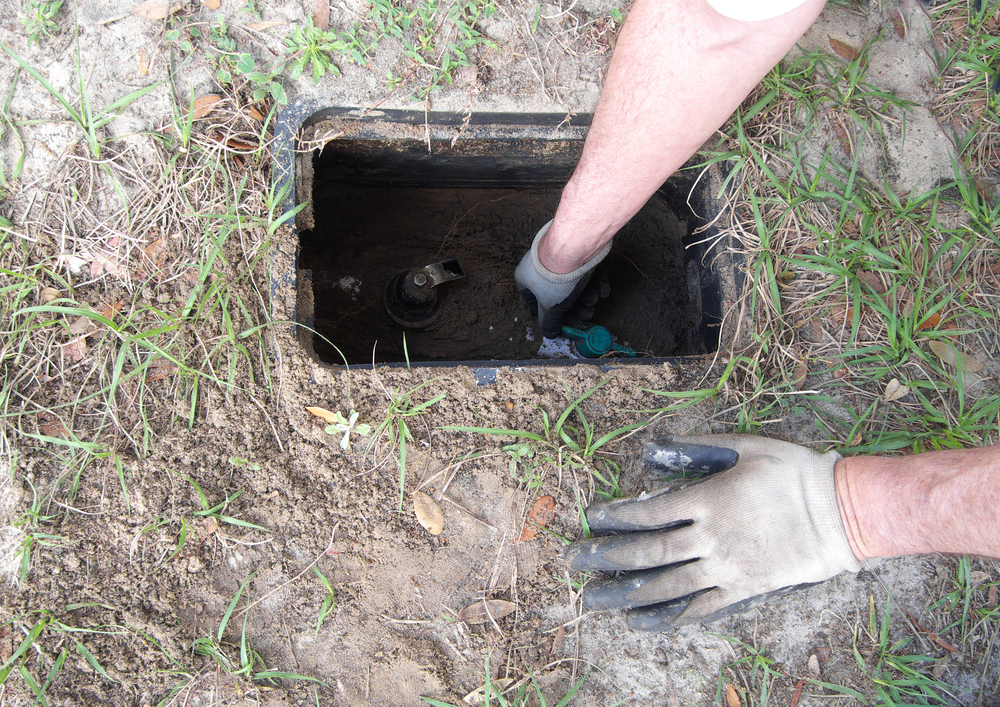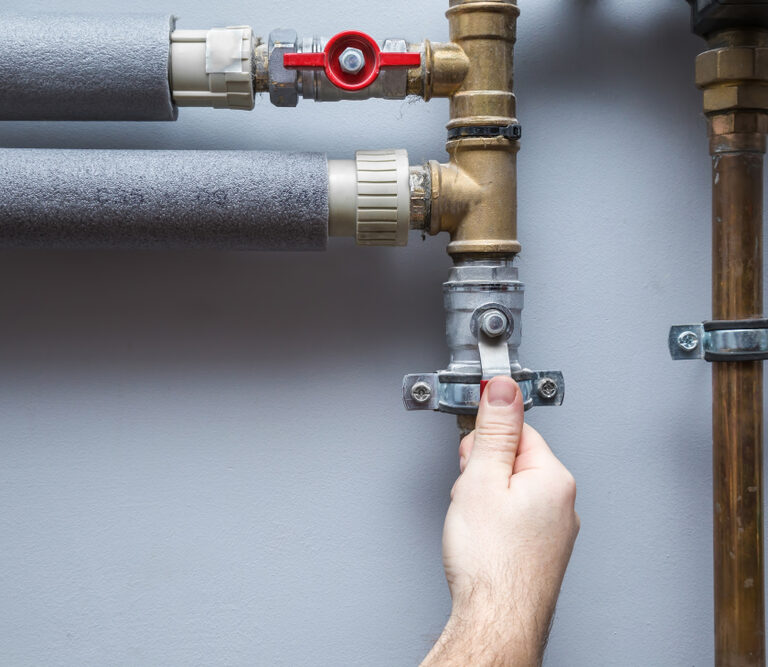Having water simply pour out of faucets throughout your home is a modern luxury that most people don’t give a second thought. When something goes wrong, however, and you have water spraying all over the floor, you need to know how to shut it off —fast.
In some situations, this means finding the water valve for the specific faucet or pipe you’re having trouble with and shutting it off. For other things, however, you will want to turn off the water throughout the house. By preventing the water from flowing, you can fix broken pipes or just perform normal plumbing without the risk of flooding your home.
Shutting off all the water to your home is not difficult. You simply need to find your main water valve and close it. If you are in the middle of an emergency, however, you need to make sure you know exactly where the main water valve is located. Just as important, you want to be confident that the valve has not corroded and become difficult to close.
So, whether you just want to be prepared for an emergency, or you have a plumbing job coming up, follow these steps to learn how to turn off the water to your entire home. Once you know how to shut off the water, it is a good idea to go through these steps at least once a year to ensure your main water valve is in good working order.
Locate the Main Water Valve
The first step is going to be to locate the main water valve in your home. Many people are not aware of where their water comes into their home, which is where the valve is likely to be. In general, the main water valve will be on a larger (typically about ½’’) pipe.
The specific type of valve to look for will change from house to house. Some will have a round handle, and others will have a “winged” design, so look for both. If you don’t already know where your main water valve is located, check the following places:
Inside Your Home
Most of the time your main water valve will be somewhere inside your home. Look in your utility room, as that is a common location. Another place to look is in a closet on the side of your home that is facing the road, since the pipes will run to water mains under the street. You will almost always find the shutoff valve either in the basement or on the ground floor, so make sure to start your search there.
If you can’t find it just by looking, consider locating the cold-water feed pipe on your hot water heater. Follow that back until you reach your main shutoff valve. In the vast majority of cases, this pipe will lead you directly there.
On an Exterior Wall
While shutoff valves are typically found inside, you may sometimes find them mounted on your exterior wall. This is more common in places with warm climates, where having the pipes freeze is not a significant risk.
To locate a water shutoff valve on the outside of your home, start by looking along the ground on the side of your home that faces the street. Also check around the corners on this side of the home to see if you can find it.
Buried Near Water Main

If you cannot find your home’s water shutoff valve, or your valve is broken, your last option is to find the shutoff valve that attaches to the city water main. This is going to be buried several feet down and may not be easy to find. In most places, you need to seek permission from the city water department to dig and locate this valve. In fact, the city water department will send a team out to locate the valve and dig it up to provide access.
Shutting off your water at this location is only done as a last resort. If you do have to have the city water department come out, you will want to make sure to have a shutoff valve installed in your home while the water is off so you do not need access to the city water main again in the future.
How to Turn Off the Main Water Valve
Once you have located the water shutoff valve for your home, the way to turn it off will depend on the type of valve that is installed. For a “gate valve,” you simply twist it clockwise several times until it is off. If you have a “ball valve,” you turn the lever clockwise 90 degrees so that it is perpendicular with the pipe itself. Ideally the lever will be able to close the valve without much trouble. Sometimes, however, the valve can be hard to shut.
Shutting off a Stuck Valve
If it has been a long time since you have closed or opened the water valve, it may be difficult to get it to turn. If you find that you cannot get the valve to twist shut, try one or more of the following things to get your valve to move.
Penetrating Oil
Spray the valve with a penetrating oil product. This product is able to penetrate through rust, corrosion, lime scale, and other things that make it difficult to turn the valve. Apply a generous amount of the penetration oil and let it sit for about 15 minutes. After 15 minutes, try to turn the valve again to see if it has become unstuck.
Use a Wrench
Use a valve wrench to get some extra leverage. Secure the wrench on the valve just below the handle and twist it clockwise. When ready to try to turn the wrench, make sure to hold the pipe next to the valve to avoid breaking the pipe before the valve loosens up.
Tap the Valve
Valves often become stuck open because they are rusted or corroded. You can often get the valve to loosen up by tapping it gently with a hammer. To do this, hold the bottom of the valve securely in your hand, and tap the top of it gently with a hammer several times to try to break up the rust or corrosion. After tapping, try to twist the valve again with your hand.
You can attempt to use all of these methods to loosen up a stuck valve.
Open Water Taps
Once you have the main water valve, go around to the various taps in your home and open them up. This will let any water in the pipes drain out so that the water pressure is gone. You can now perform whatever plumbing work needs to be done without worrying about water leaks.
Turn Main Water Valve Back On
When you’re ready to restore water pressure, simply go back to your main water valve and turn it counterclockwise to open it up again. Once the main valve is open, the water will flow into your pipes and begin coming out your open taps. For the first few seconds, the water will sputter and spit until all the air has been pushed out of the pipes.
Once the water is flowing from your taps normally, you can close the tapes and begin using them normally. Anytime you perform any type of work on water pipes, you will want to go back and inspect the valves for any leaks.
Test Your Main Valve Annually
Now that you know how to turn off the water to your house, it is a good idea to do it at least once per year. Turning the water off and back on once a year will help to prevent the valve from getting stuck shut. It will also give you the opportunity to discover any leaks or other problems before they cause any damage. This is an easy maintenance task that will help keep your home’s plumbing functioning for years to come.
